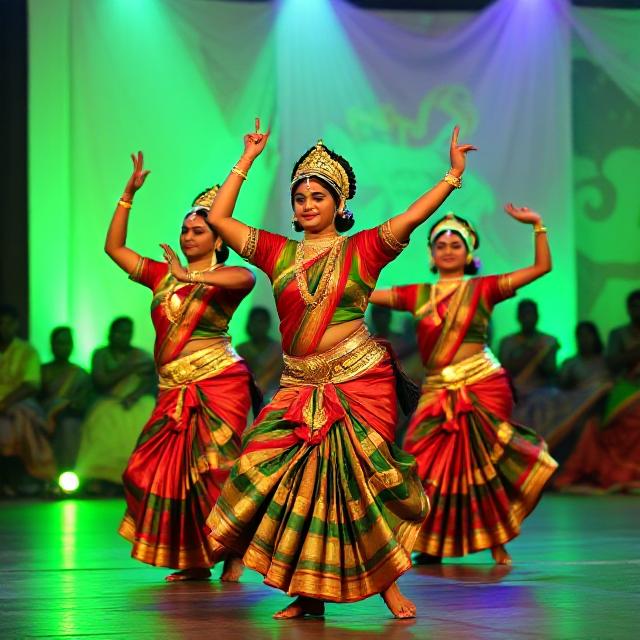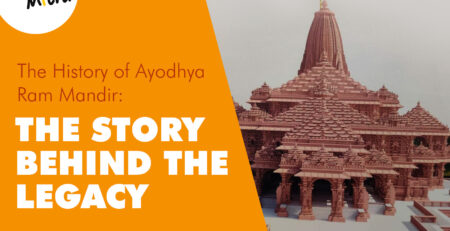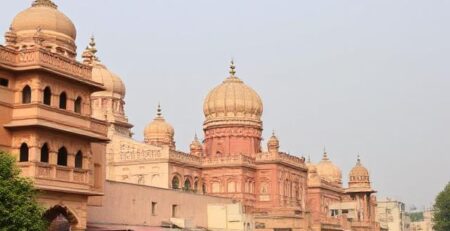Valli Kummi: The Ancient Tamil Folk Dance That Set a World Record
In the vibrant tapestry of Tamil cultural heritage, few art forms capture the essence of community celebration and traditional values as beautifully as Valli Kummi. This ancient folk dance, deeply rooted in the agricultural heartlands of Tamil Nadu, has not only preserved centuries-old traditions but has also achieved global recognition by setting a remarkable Guinness World Record. The mesmerizing rhythm of synchronized clapping, the graceful circular movements, and the melodious folk songs that accompany this dance form represent more than mere entertainment – they embody the soul of Tamil village life and the unbreakable bonds of community solidarity.
Understanding Valli Kummi: The Dance of Unity and Joy
Valli Kummi represents a specialized form of the broader Kummi dance tradition that has flourished in Tamil Nadu for millennia. The term “Kummi” itself derives from the Tamil word “Kommai,” which literally translates to “circle,” perfectly describing the fundamental formation of this enchanting dance. Valli Kummi, in particular, holds special significance as it incorporates elements of storytelling, often narrating tales of valor, love, and divine intervention that resonate deeply with Tamil cultural consciousness.
This folk dance form is characterized by its accessibility and inclusivity. Unlike classical dance forms that require years of rigorous training, Valli Kummi can be performed by women of all ages and backgrounds, making it a truly democratic art form. The dance typically involves participants forming concentric circles, with dancers moving in synchronized patterns while maintaining rhythmic hand clapping that serves as both percussion and choreographic element.
The beauty of Valli Kummi lies in its simplicity and spontaneity. Performers do not require elaborate costumes or complex makeup – the traditional attire consists of colorful saris or half-saris, often adorned with flowers in their hair and simple jewelry. This accessibility has ensured the dance form’s survival through generations, passed down from mothers to daughters in an unbroken chain of cultural transmission.
The Historic World Record Achievement
The year 2024 marked a watershed moment for Valli Kummi when it entered the annals of global recognition through a spectacular Guinness World Record achievement. In February 2024, 16,000 women participated in the largest Valli Kummi performance in Perundurai, setting a Guinness World Record. This extraordinary feat was organized by the Kongunadu Makkal Desiya Katchi (KMDK) and coordinated by the Kongunadu Kalai Kuzhu, demonstrating the power of collective cultural expression.
The world record performance was not merely a display of numbers but a testament to the enduring appeal and cultural significance of this traditional dance form. The event required meticulous planning, with organizers coordinating the movements of thousands of performers across a vast venue. The synchronization achieved during this performance highlighted the discipline and community spirit that are inherent characteristics of Tamil folk traditions.
This achievement brought international attention to Tamil folk culture and served as a powerful reminder of the importance of preserving traditional art forms in an increasingly globalized world. The event also demonstrated how traditional practices can be scaled up to create spectacular contemporary cultural expressions while maintaining their authentic essence.
Cultural Significance and Traditional Context
The significance of Kummi dance in Tamil culture extends far beyond entertainment value. Historically, these dances served multiple social functions within rural communities. They were integral to harvest celebrations, marking the successful completion of agricultural cycles and expressing gratitude to the divine forces believed to govern agricultural prosperity. The circular formation of the dance symbolizes the cyclical nature of seasons, life, and cosmic order.
Kummi is often danced during festivals and accompanies songs called “Kummi songs”. These songs typically contain moral lessons, historical narratives, or devotional content, making the dance form an important vehicle for cultural education and value transmission. Through rhythmic verses and repetitive choruses, participants and observers alike absorb cultural knowledge while enjoying the performance.
The dance also served important social functions, providing opportunities for women to gather, socialize, and express themselves creatively within the constraints of traditional society. These gatherings fostered community bonds, facilitated the exchange of news and information, and created spaces for collective problem-solving and mutual support.
In contemporary times, Valli Kummi continues to play a vital role in preserving Tamil cultural identity. Schools, cultural organizations, and community groups actively promote the learning and performance of this dance form, ensuring that younger generations remain connected to their cultural roots. The dance has also adapted to modern contexts, being performed at cultural festivals, diaspora gatherings, and educational institutions worldwide.
Tamil Nadu: The Heartland of Kummi Dance
Tamil Nadu, often referred to as the cultural capital of South India, serves as the primary geographical home of Kummi dance traditions. Kummi is a folk dance popular in Tamil Nadu and Kerala in India, danced mostly by South Indian women in circle. However, within Tamil Nadu, different regions have developed their own distinctive variations and styles of Kummi performance.
The state’s diverse geographical regions – from the fertile delta areas of Thanjavur to the hill stations of the Western Ghats – have all contributed unique elements to the Kummi tradition. Coastal regions often incorporate themes related to fishing and maritime life, while agricultural areas focus on farming activities and seasonal celebrations. The Kongu region, where the world record was achieved, has been particularly instrumental in preserving and promoting Valli Kummi traditions.
Tamil Nadu’s commitment to preserving its folk heritage is evident in the numerous cultural institutions, government initiatives, and community organizations dedicated to promoting traditional dance forms. The state government regularly organizes cultural festivals and competitions that provide platforms for Kummi performers to showcase their talents and for the tradition to evolve while maintaining its authentic character.
The dance form has also found international recognition through the Tamil diaspora communities settled in countries like Malaysia, Singapore, Sri Lanka, and various Western nations. It is also danced by Tamils of Sri Lanka, demonstrating the cultural connections that transcend political boundaries and geographical distances.
Diverse Types and Variations of Kummi Dance
The richness of Kummi tradition is reflected in its numerous variations, each adapted to specific contexts, occasions, and regional preferences. Understanding these different types provides insight into the versatility and adaptability of this folk dance form.
Traditional Kummi
The basic form of Kummi involves women standing in circular formations, clapping their hands rhythmically while moving in coordinated patterns. In some places, it is very simple, with rhythmic clapping or beating of the drums. In other places dancers imitate various harvesting activities. This fundamental style serves as the foundation for all other variations.
Valli Kummi
Valli Kummi represents a more elaborate and narrative-driven version of the traditional dance. It often incorporates storytelling elements, with dancers enacting scenes from epic tales or local legends. The term “Valli” itself has connections to Tamil mythology, referring to the consort of Lord Murugan, adding a devotional dimension to the performance.
Oyil Kummi
Oyil Kummi or Oyil Attam is performed by large groups of men wearing bells on their feet and narrating mythological stories. This variation breaks the traditional gender boundaries of Kummi dance, incorporating male participants and introducing ankle bells as additional percussion elements. Oyil Kummi is a fusion of oyilattam with kummi, representing the creative synthesis of different folk traditions.
Harvest Kummi
Specifically performed during agricultural seasons, harvest Kummi focuses on themes related to farming activities, crop cycles, and rural life. Dancers often mime actions such as sowing seeds, tending crops, or celebrating successful harvests, making this variation particularly meaningful for agricultural communities.
Festival Kummi
Adapted for religious and cultural festivals, this variation incorporates devotional songs and themes related to specific deities or celebrations. Festival Kummi often features more elaborate costumes and decorations, reflecting the ceremonial nature of the occasions for which it is performed.
Modern Fusion Kummi
Contemporary choreographers and cultural groups have developed fusion versions that incorporate elements from other dance forms while maintaining the essential characteristics of traditional Kummi. These modern interpretations help attract younger audiences and demonstrate the dance form’s adaptability to changing cultural contexts.
Performance Characteristics and Techniques
The technical aspects of Valli Kummi reveal the sophisticated understanding of rhythm, space, and group dynamics that underlies this apparently simple folk dance. Kummi dance is performed in a circular formation, with women standing shoulder to shoulder, clapping their hands rhythmically. This basic formation allows for infinite variations in movement patterns and spatial arrangements.
The hand clapping technique in Kummi is far more complex than it might initially appear. Different patterns of clapping correspond to different rhythmic cycles, and experienced performers can create intricate polyrhythmic structures through coordinated hand movements. The clapping serves multiple functions: it provides percussion accompaniment, helps maintain group synchronization, and creates visual patterns that enhance the overall aesthetic appeal of the performance.
Footwork in Valli Kummi typically involves simple stepping patterns that allow performers to move around the circle while maintaining the group formation. The emphasis is on grace and coordination rather than athletic complexity, making the dance accessible to participants of varying physical abilities. The stepping patterns often mirror the rhythmic structures of the accompanying songs, creating a unified audio-visual experience.
Body movements in Kummi dance are characterized by their natural, unforced quality. Unlike classical dance forms that emphasize precise positioning and angular movements, Kummi allows for more fluid and spontaneous expression. Shoulder movements, gentle swaying, and expressive hand gestures complement the basic clapping and stepping patterns.
The spatial dynamics of group Kummi performances require careful coordination and awareness. The dancers may form multiple circles with dancers changing pairs with the members of adjacent circles to make the beats. This complexity increases exponentially when hundreds or thousands of performers participate simultaneously, as was demonstrated in the world record achievement.
Musical Elements and Accompaniment
Music forms an integral component of Valli Kummi performances, with the dance and musical elements being inseparably linked. The songs that accompany Kummi dances, known as Kummi Paadal, represent a rich repository of Tamil folk literature and oral tradition. These songs cover a vast range of themes, from mythological narratives and moral instructions to contemporary social commentary and humorous observations about daily life.
The musical structure of Kummi songs is typically characterized by simple melodies that are easy to sing and remember. This accessibility ensures that songs can be learned and transmitted without formal musical training, supporting the folk tradition’s oral nature. The repetitive chorus structures allow for group participation, with lead singers alternating with collective responses from the dancers and audience.
Traditionally, Kummi dances were performed without instrumental accompaniment, relying entirely on vocal music and hand clapping for rhythmic support. Kummi dance originated during a period when there were no musical instruments. This a cappella tradition has been preserved in many contemporary performances, though some modern adaptations incorporate simple percussion instruments like drums or cymbals.
The lyrics of Kummi songs serve educational and cultural functions, transmitting historical knowledge, moral values, and cultural practices from one generation to the next. Many songs contain references to Tamil literary classics, ensuring that elements of high culture are disseminated through popular folk expressions. Others focus on practical knowledge about agriculture, health, and social relationships.
Contemporary Kummi performances sometimes feature modern musical arrangements while preserving the essential melodic and rhythmic characteristics of traditional songs. This adaptation helps maintain the relevance of the art form for younger audiences while respecting its historical authenticity.
Social and Community Impact
The social significance of Valli Kummi extends well beyond its role as entertainment or cultural expression. Throughout Tamil history, these communal dance gatherings have served as important venues for social interaction, community building, and collective problem-solving. In traditional village settings, Kummi performances provided opportunities for women from different families and social backgrounds to come together, fostering social cohesion and mutual understanding.
The inclusive nature of Kummi dance has made it an important tool for social integration. Unlike some traditional practices that maintain strict social hierarchies, Kummi performances typically welcome participants regardless of their economic status, caste background, or educational level. This democratic character has helped preserve the dance form’s popularity across diverse social segments.
In contemporary contexts, Valli Kummi continues to serve important community functions. Cultural organizations use Kummi workshops and performances to engage diaspora communities, helping maintain cultural connections across geographical distances. Schools and educational institutions incorporate Kummi into their cultural programs, providing students with experiential learning about their heritage.
The world record achievement in 2024 demonstrated the potential of traditional art forms to generate collective pride and social mobilization. The event required unprecedented cooperation among diverse groups and individuals, creating temporary communities united by shared cultural purpose. Such large-scale cultural events also generate economic benefits for local communities through tourism, media attention, and cultural industry development.
Educational and Pedagogical Value
Valli Kummi serves as an excellent educational tool for transmitting cultural knowledge and values to younger generations. The dance form’s combination of physical movement, musical expression, and narrative content provides multiple learning pathways that accommodate different learning styles and preferences. Children who participate in Kummi activities develop physical coordination, musical appreciation, cultural knowledge, and social skills simultaneously.
The memorization requirements for Kummi songs help strengthen cognitive abilities while exposing learners to classical Tamil literature and language. Many Kummi songs contain archaic Tamil words and phrases that are no longer used in daily conversation, making the dance form an important repository of linguistic heritage. Through regular practice and performance, participants develop fluency in traditional Tamil expressions and cultural references.
The collaborative nature of Kummi dance teaches important social skills including cooperation, timing, spatial awareness, and group dynamics. Participants learn to coordinate their individual actions with collective goals, developing leadership skills and mutual respect. These social learning outcomes have particular relevance in contemporary educational contexts that emphasize collaborative learning and cultural competency.
Educational institutions increasingly recognize the value of incorporating traditional arts like Valli Kummi into their curricula. Such programs help students develop cultural pride and identity while providing alternative forms of creative expression that may appeal to students who are less interested in conventional academic subjects.
Preservation Efforts and Future Prospects
The successful world record achievement represents just one aspect of broader efforts to preserve and promote Valli Kummi traditions for future generations. Cultural organizations, government agencies, and community groups throughout Tamil Nadu and beyond are implementing various strategies to ensure the continuity and vitality of this important art form.
Documentation projects are creating comprehensive records of different Kummi variations, songs, and performance practices. These efforts include video recordings of master practitioners, transcriptions of traditional songs, and scholarly analyses of the dance form’s cultural significance. Such documentation serves both preservation and educational purposes, providing resources for future researchers and performers.
Training programs and workshops are being established to ensure systematic transmission of Kummi knowledge and skills. Experienced practitioners are working with younger generations to maintain technical standards while allowing for creative adaptation and innovation. These programs often combine traditional apprenticeship models with modern pedagogical approaches.
Digital platforms and social media are playing increasingly important roles in Kummi preservation and promotion. Online communities share performance videos, discuss traditional practices, and coordinate large-scale events like the world record attempt. These digital tools help connect dispersed communities and facilitate knowledge exchange across geographical boundaries.
The integration of Valli Kummi into formal educational curricula represents another important preservation strategy. Schools and universities are developing courses and programs that study folk dance traditions within broader contexts of cultural studies, anthropology, and performing arts. This academic recognition helps legitimize and preserve traditional knowledge systems.
Global Recognition and Cultural Diplomacy
The international attention generated by the Valli Kummi world record has positioned this traditional dance form as an ambassador of Tamil culture on the global stage. Cultural diplomacy initiatives now frequently feature Kummi performances as representations of Indian folk heritage, introducing international audiences to the richness and diversity of South Indian cultural traditions.
Tamil diaspora communities worldwide have embraced Valli Kummi as a means of maintaining cultural connections and transmitting heritage to subsequent generations born outside India. Community centers, cultural associations, and religious institutions in countries with significant Tamil populations regularly organize Kummi workshops and performances, creating spaces for cultural practice and identity expression.
International cultural festivals and academic conferences increasingly include presentations and performances of Tamil folk dances, including Valli Kummi. These platforms provide opportunities for cultural exchange and scholarly dialogue about traditional art forms’ roles in contemporary multicultural societies.
The success of the world record event has inspired similar large-scale cultural initiatives in other regions and for other traditional art forms. This demonstration effect suggests that traditional practices can achieve contemporary relevance and global recognition while maintaining their authentic characteristics.
Conclusion: The Enduring Legacy of Valli Kummi
Valli Kummi represents far more than a traditional dance form – it embodies the collective memory, cultural values, and artistic creativity of Tamil civilization. From its origins in ancient village gatherings to its contemporary status as a world record holder, this remarkable art form has demonstrated extraordinary resilience and adaptability while maintaining its essential character and cultural significance.
The achievement of the Guinness World Record by 16,000 performers stands as a powerful testament to the enduring appeal and relevance of traditional cultural expressions in the modern world. This historic event demonstrated that ancient traditions need not be relegated to museums or academic studies but can continue to inspire and unite communities in spectacular contemporary expressions.
As we look toward the future, Valli Kummi faces both opportunities and challenges. The global recognition achieved through the world record provides unprecedented visibility and support for preservation efforts. However, the ongoing pressures of modernization, urbanization, and cultural globalization require continued vigilance and adaptive strategies to ensure the art form’s survival and vitality.
The success of Valli Kummi offers valuable lessons for other traditional art forms struggling to maintain relevance in contemporary contexts. It demonstrates that authenticity and innovation need not be mutually exclusive, and that traditional practices can achieve global recognition while remaining true to their cultural roots. The dance form’s emphasis on community participation, accessibility, and collective celebration provides a model for cultural practices that build social cohesion while preserving heritage.
Ultimately, the story of Valli Kummi is a celebration of human creativity, cultural continuity, and the power of collective expression to transcend boundaries of time, space, and circumstance. As thousands of performers move in synchronized harmony, clapping their hands and singing ancient songs, they participate in a cultural continuum that connects them to countless generations of their ancestors while creating new memories and meanings for future generations to inherit and cherish.











